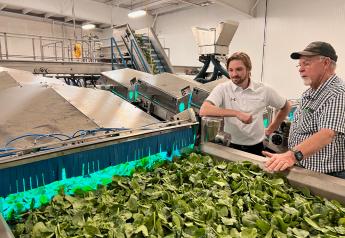Inflation cooling, report says

On a year-over-year basis, the U.S. consumer inflation rate for all items cooled to 4.9% in April, down slightly from 5% in March, according to the latest Consumer Price Index report from the Bureau of Labor Statistics.
The 4.9% increase for all items was the smallest 12-month increase since the period ending April 2021. The all-items index, leaving out the food and energy components, rose 5.5% over the last 12 months, the report said. The energy index decreased 5.1% for the 12 months ending April, and the food index increased 7.7% over the last year, according to government data.
The food index was unchanged in April, the report said. The grocery food price index fell 0.2% over the month, following a 0.3% decrease in March.
Four of the six major grocery store food group indexes decreased from March to April. The index for fruits and vegetables decreased 0.5% in April, and the index for meats, poultry, fish and eggs declined 0.3% over the month, the report said. The dairy and related products index decreased 0.7% in April as the milk index fell 2%, the largest decline in that index since February 2015.
The grocery food price index rose 7.1% over the last 12 months, the report said. While the index for cereals and bakery products rose 12.4% over the 12 months ending in April, the remaining major grocery store food groups posted increases ranging from 2% (fruits and vegetables) to 10.4% (other food at home).
The index for restaurant food rose 8.6% over the last year, the report said. The index for full-service meals rose 7.2% over the last 12 months, and the index for limited-service meals rose 8.2% over the same period.
Year-over-year retail fresh produce inflation
(April 2023, with change compared with April 2022)
- Fresh fruits and vegetables: -0.4%.
- Fresh fruits: -1.8%.
- Apples: 5.8%.
- Bananas: 2.7%.
- Citrus fruits: -5.4%.
- Oranges, including tangerines: -4.7%.
- Other fresh fruits: -3.4%.
- Fresh vegetables: 1.4%.
- Potatoes: 7.5%.
- Lettuce: 3.9%.
- Tomatoes: -1.8%.
- Other fresh vegetables: 0.4%.
Source: Bureau of Labor Statistics







